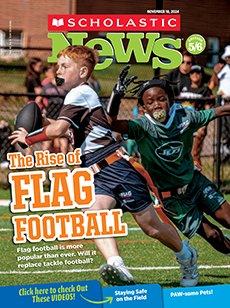America’s national parks are known for their wide-open spaces, natural beauty, and stunning wildlife. But these days, visitors might also find long lines of cars, litter on packed hiking trails, and people taking selfies dangerously close to animals.
Parks in the National Park System had more than 311 million visitors in 2022. And the number of visitors to some of the most popular national parks increased last year. More people can often mean more problems.
“If all those people left trash behind or fed wildlife or were not considerate of the other visitors, that would be a really messy park,” says JD Tanner. He’s the director of education and training at Leave No Trace. The organization encourages people to protect the outdoors.
As crowds get bigger, the National Park Service (NPS) has a difficult challenge. It must balance people’s enjoyment of parks with its mission of protecting these special places. But the NPS can’t do it alone: Visitors play an important role in preserving parks too.
